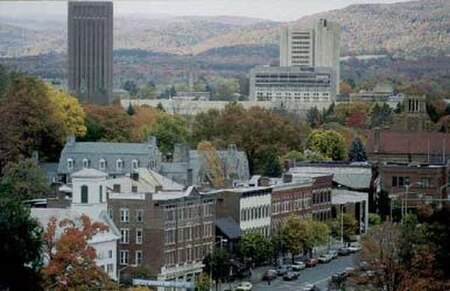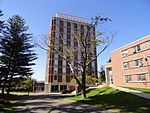Amherst, Massachusetts

Amherst ( ) is a city in Hampshire County, Massachusetts, United States, in the Connecticut River valley. Amherst has a council–manager form of government, and is considered a city under Massachusetts state law. Amherst is one of several Massachusetts municipalities that have city forms of government but retain "The Town of" in their official names. At the 2020 census, the population was 39,263, making it the highest populated municipality in Hampshire County (although the county seat is Northampton). The town is home to Amherst College, Hampshire College, and the University of Massachusetts Amherst, three of the Five Colleges. Amherst has three census-designated places: Amherst Center, North Amherst, and South Amherst. Amherst is part of the Springfield, Massachusetts Metropolitan Statistical Area. Lying 22 miles (35 km) north of the city of Springfield, Amherst is considered the northernmost town in the Hartford–Springfield Metropolitan Region, "The Knowledge Corridor". Amherst is also located in the Pioneer Valley, which encompasses Hampshire, Hampden and Franklin counties.
Excerpt from the Wikipedia article Amherst, Massachusetts (License: CC BY-SA 3.0, Authors, Images).Amherst, Massachusetts
Cottage Street,
Geographical coordinates (GPS) Address Nearby Places Show on map
Geographical coordinates (GPS)
| Latitude | Longitude |
|---|---|
| N 42.383333333333 ° | E -72.516666666667 ° |
Address
Cottage Street 90
01002
Massachusetts, United States
Open on Google Maps







